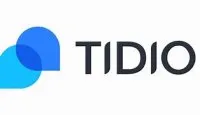Livechat vs Helpdesk: what’s the difference?
We break down these customer-facing and back-end communication tools

If you’re looking to build your support resources, you may be considering customer-facing tools like Livechat, or case management tools for staff like Helpdesk.
There’s a time and a place for both, and this article aims to break down what makes each tool effective and how they can complement each other.
Tidio combines live chat and chatbot tools to help you improve customer service and generate more sales. Visit Tidio.com to start your free trial and get 15% off any subscription plan.
What is Livechat?
Livechat’s primary function is to offer one-to-one support for customers through either a pop-up window on a company’s website or another supported channel, like Messenger, WhatsApp, or Apple Business Chat.
While it does allow for a more personalized approach, and enhances the company’s ability to deal with more complex questions, it can prove expensive, especially when having to employ multiple agents.

Livechat: features
Before you even get started, it’s possible to see what a client is typing (on certain supported platforms) with what the company calls ‘sneak peaks’. This allows agents to source information more quickly, ultimately boosting customer satisfaction and increasing the volume of customers they can support.
If a customer mistakenly lands in the wrong chat channel - for example support and not sales - agents can action behind-the-scenes transfers so that end users don’t experience a disruption to their chat. However, there are some steps to take that can eliminate this, though, such as setting up automatic chat redirects depending on which URL a user lands on.
Where an agent may find themselves answering the same question regularly or needing to pull in information on a commonly used discount code, canned answers can help to save time, allowing workers to pull in pre-written messages. To the contrary, more detailed responses may benefit from the additional formatting supported, like being able to send interactive cards with embedded images and CTA buttons, or menus with quick reply buttons.
Sign up to the TechRadar Pro newsletter to get all the top news, opinion, features and guidance your business needs to succeed!
Common file types like documents and media are also supported, as are emailed transcriptions and saved in-chat history for future visits.
When agents are away from the desk, an automated messaging tool can collect the relevant data from a chat user for agents to follow up at a more convenient time, which means customers don’t need to wait around in a queue until opening hours.
Finally, there’s the customization available. Whether it’s tweaking color palettes to suit your branding or setting up user profiles with headshots and names, these sorts of services are designed to give end users the more personalized experience.
Livechat: insights
We’re likely all familiar with the end-of-chat survey, but unless it’s super simple and quick to answer, many customers give it a miss.
There are other analytics collected during the entire process, though, which offer a more quantitative look at operations. Figures like total chats, missed chats, engagement, availability, chat duration, and response time are all collected.
Depending on the type of chat, you may want to consider looking at other numbers that are collected, like new and solved tickets, first response time, and how quickly an issue was resolved.
Livechat says that these figures help admins to create a staffing prediction report to help them better manage their workforce, which they may wish to balance with automation services like Chatbot.
Livechat: security
The company behind Livechat, Helpdesk, and Chatbot, says that all data is encrypted to and from its servers using the 256-bit SSL protocol. Some users can change from storing their data in American data centers to European ones, and when we got in touch with the company via its own Livechat popup, a sales rep told us that European data center access is rolling out more widely soon.
For agents, single sign-on with tools like Google sign-on, Okta, and Auth0 is supported to make logging in easier and more consistent with other company software, and admins can set up trusted IP addresses to prevent unwanted access from being gained. There's also two-factor authentication on hand.
What is Helpdesk?
Helpdesk is a tool that promises to be a simple ticketing system to manage customers’ messages in one central place. It’s best seen as a management system than a communication platform, despite its pretty impressive abilities to support conversation between agents and clients. Put simply, Helpdesk is best used to accompany a more well-rounded communication platform like Livechat.

Helpdesk: how it works
We really like the way Helpdesk organizes all tickets in one central, easy-to-use interface, which helps prevent agents from losing conversations spread across different platforms. Helpdesk has native integration for emails and some other platforms like Shopify, as well as its own related services like Livechat. Through this, you can connect to platforms like your website’s chat pop-up window, Apple Business Chat, WhatsApp and Messenger.
It’s best to look at Helpdesk as an agent management tool rather than a communications platform. It allows multiple agents to work on the same ticket, which makes team collaboration easy when a query requires more detailed product knowledge, for example.
Colleagues - and specifically, managers - may want to follow certain tickets for various reasons, such as quality assurance, training purposes, or helping out with difficult cases, and agents can mark each case with an urgency label to ensure that queries are dealt with and followed up.
Despite this, there are some features to help streamline external communications, such as message and task automation. This could include automatically sending out shipping information or sharing returns portals, and any other tasks that don’t require immediate and personalized human response.
Helpdesk: insights
The clue is in the nature of this product, which serves as a tool for logging the progression of cases. As such, there are plenty of analytic tools such as satisfaction surveys and response time reporting.
In real time, agents can also group threads by categories like feedback and complaints, support, and sales, which can help companies to understand how to distribute their workforce more effectively.
Helpdesk: security
Because Helpdesk is part of the same company as Livechat, the same security measures apply in most cases, though there are some clear distinctions such as the lack of ability to choose an EU data center for Helpdesk. Regardless, information is encrypted with the 256bit SSL protocol and there are other measures users can take to protect their data such as setting up trusted IP addresses.
Summary
Livechat and Helpdesk are best seen as two tools that complement each other rather than rivals in the same space. Livechat is designed to enhance a user’s end experience and make getting in touch with the company easier, while Helpdesk can be considered as an add-on to streamline things on the back-end.
With several years’ experience freelancing in tech and automotive circles, Craig’s specific interests lie in technology that is designed to better our lives, including AI and ML, productivity aids, and smart fitness. He is also passionate about cars and the decarbonisation of personal transportation. As an avid bargain-hunter, you can be sure that any deal Craig finds is top value!

